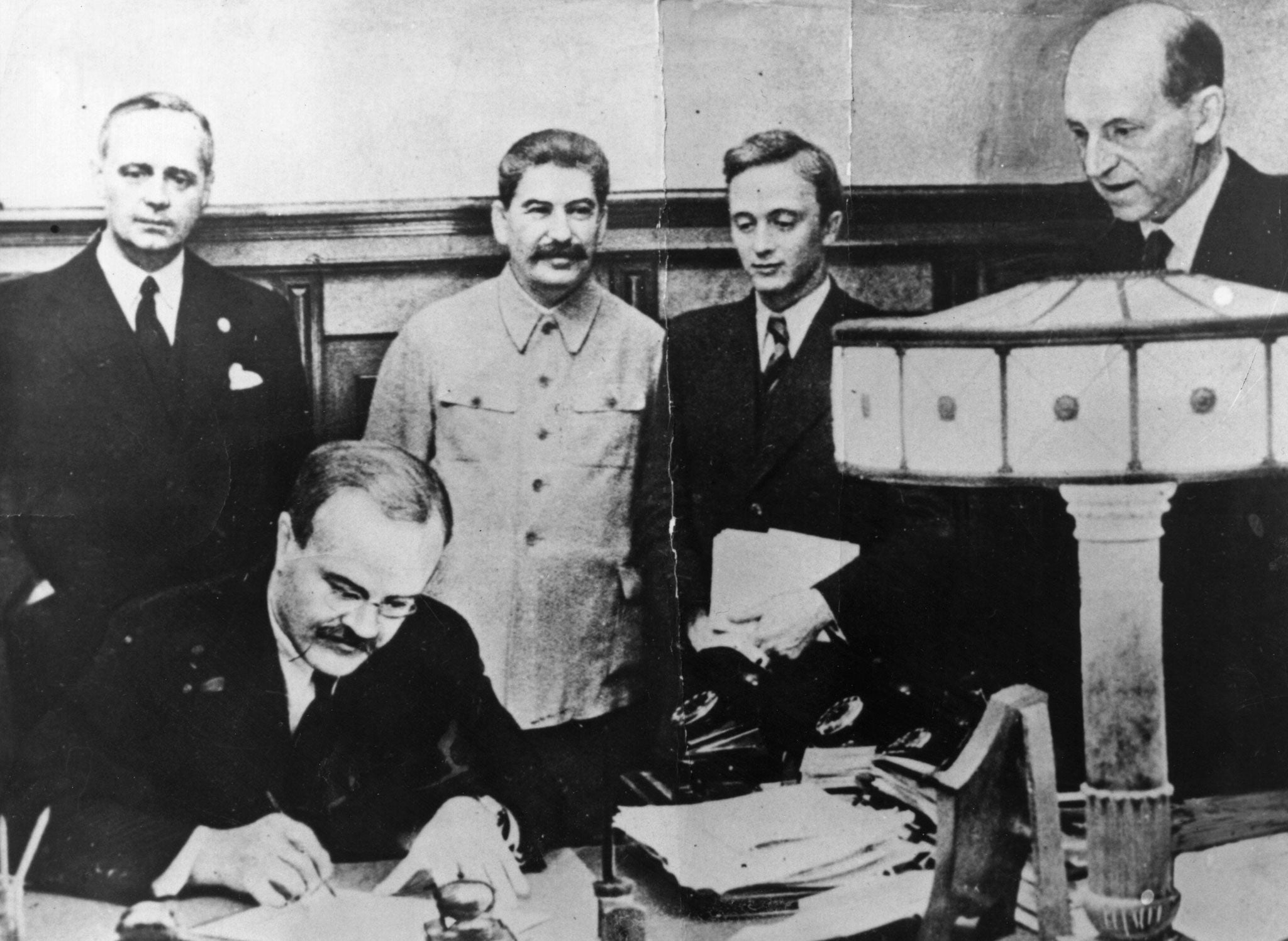The Devils' Alliance: Hitler's Pact with Stalin, 1939-1941 by Roger Moorhouse, book review

Your support helps us to tell the story
From reproductive rights to climate change to Big Tech, The Independent is on the ground when the story is developing. Whether it's investigating the financials of Elon Musk's pro-Trump PAC or producing our latest documentary, 'The A Word', which shines a light on the American women fighting for reproductive rights, we know how important it is to parse out the facts from the messaging.
At such a critical moment in US history, we need reporters on the ground. Your donation allows us to keep sending journalists to speak to both sides of the story.
The Independent is trusted by Americans across the entire political spectrum. And unlike many other quality news outlets, we choose not to lock Americans out of our reporting and analysis with paywalls. We believe quality journalism should be available to everyone, paid for by those who can afford it.
Your support makes all the difference.Samovars of black tea had been served, followed by caviar, vodka and Crimean champagne when, in the early hours of 23 August 1939, Hitler's photographer Heinrich Hoffmann was ushered into the "smoke-laden" room alongside his Soviet counterpart replete with "prehistoric camera and an antediluvian tripod", to capture the moment: beneath a large framed photograph of Lenin, Molotov, Ribbentrop and a beaming Stalin appended their signatures to the treaty that would change the lives of millions of Europeans.
Seventy-five years on, historian Roger Moorhouse makes an elegant plea for retrieving the Pact from its "place too often in the footnotes", to disentangle the myths from facts and recast erroneous readings.
The world of treaties and secret protocols between these unlikely "comrades" is grimly compelling. The Pact baffled Communists and National Socialists alike,troubled Roosevelt, and alarmed the "imperialists on that miserable island" and the French. The propaganda machines in both "spheres of influence" struggled to keep up, Ribbentrop feted in Moscow beneath banners of swastikas hastily gathered from film studios churning out anti-Nazi films, an anti-Bolshevik German entry at the Venice Film Festival swapped for a Pushkin adaptation. For the Polish population, it was hellish, caught between the double scythes of murderous -isms.
An anti-aggression pact detailing economic and trade agreements, the secret protocol in its wake was more transparent about how Europe might be carved up. Beneath the real trading, was the bigger picture objective regardless of "the Easterners'" diplomatic hopes: the Russians obliterated or enslaved, Hitler surmised, European Jews could be deported to Russia, rather than Madagascar. This before the Final Solution was conceived and the horrors practised in Poland perfected; a stepping-stone to Red power in the Baltic and beyond, the Soviet line.
The brutality was identical ("Close your hearts to pity!"), the details heart-breaking: Red Army soldiers collecting corpses of children from deportation wagons; the choices one son made given 15 minutes to pack – in Kazakhstan his mother finds "his French dictionary, a recipe book and some Christmas decorations".
It is those mutual atrocities that triggered resistance in some of the German military who, in the last year of the war, opposed further carnage, as did some civilians, through disobedience.
Join our commenting forum
Join thought-provoking conversations, follow other Independent readers and see their replies
Comments